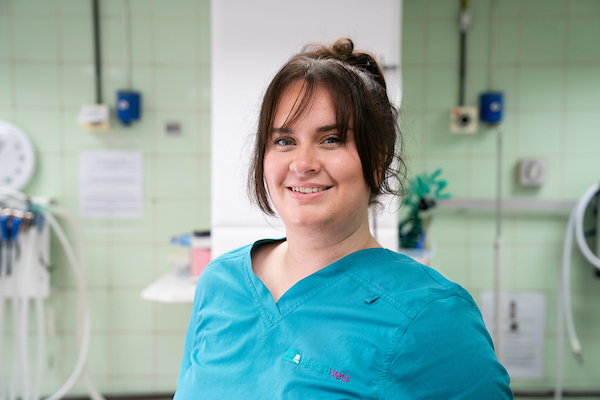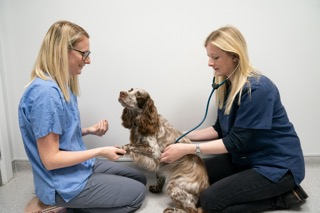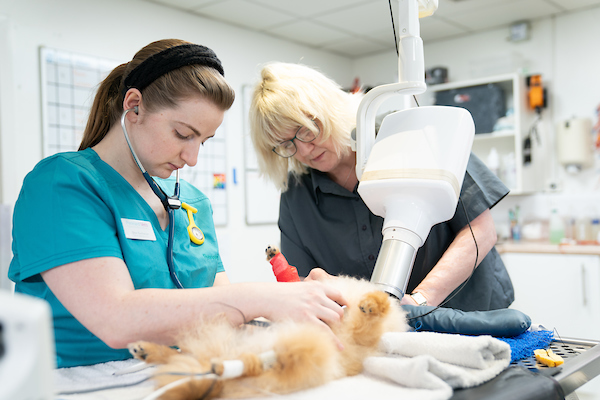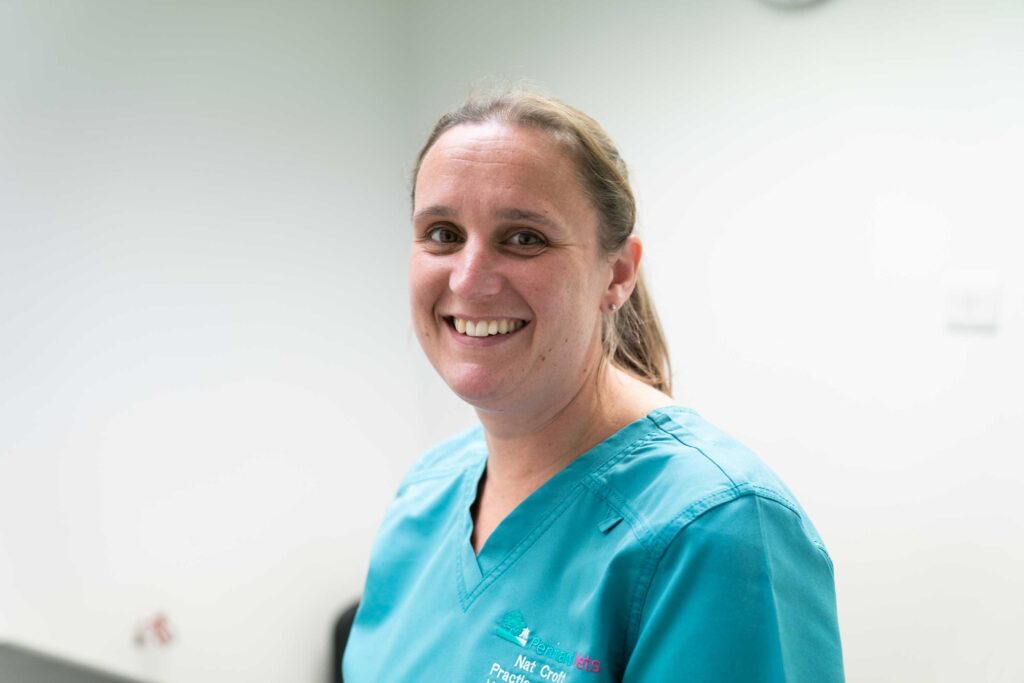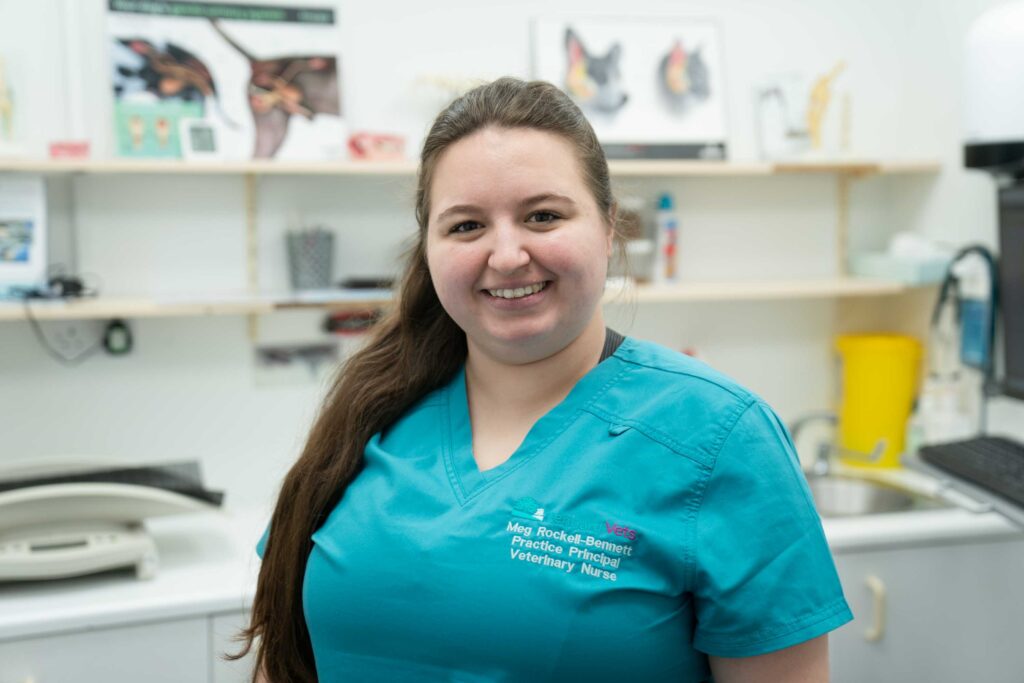Joining the Pennard Vets team is much more than just a career choice – it’s a move to become one of our employee owners. Everyone from our vets to our admin team is #ProudlyPennards, and we appreciate what all of team members do. This week we hear from Erin Courtman, speaking to us about her role as an imaging nurse and the empowerment it brings to the veterinary nursing profession.
Can you tell us a bit about your background and what initially drew you to veterinary nursing?
“From a young age, veterinary nursing was always my dream. There was a few times that other things jumped into my mind like every young person! However, when I completed work experience in school at a local practice, I knew it was what I wanted to do.
I began working as an Animal Care Assistant between a few practices, which really allowed me to start getting into the groove of day to day work for a veterinary nurse. I further progressed into a job in referrals where I became a student, and found my love for everything diagnostic as I was working with CT and MRI frequently! Fast forward 2 years and here I am at Pennards working as part of the CT team.”
How did you first become interested in imaging, particularly CT scanning?
“My first interest began in my previous workplace, as I was exposed to CT especially, on nearly a daily basis. Being able to follow a patient from admission, into CT or MRI and then usually into theatre was something very rewarding, and then of course looking after them afterwards!
Diagnostic imaging is not only about finding the problem, but also being able to say “this is how we fix and help this patient!”
What prompted you to pursue a passion in imaging within your veterinary nursing career?
“A very interesting case that involved a stick and a dogs chest! Since this, I knew that imaging was something I wanted to delve deeper into!”
Can you describe your experience with CT scanning so far? What do you enjoy most about it?
“My experiences so far have been nothing but positive. As I see the referrals come in to our new service, it is incredibly rewarding to know that you are helping patients in house and being able to give them the care they need, all in one place.
What I enjoy most, is seeing the progression of the patients journey, knowing that I have helped make them feel better in some way!”
Were there any specific challenges you faced while transitioning into this niche area? How did you overcome them?
“The main challenge when entering this niche, is adapting to a new style of monitoring patients, for lots of nurses, both students and registered, can find the process of monitoring a CT anaesthetic a little daunting, however I love the challenge and feel that it has completely furthered my knowledge and expertise.
When it came to overcoming this challenge, my main mindset was exposure. The more I did it the more comfortable I felt!”
What skills do you think are essential for vet nurses who want to get involved in imaging?
“I will always advocate a calm environment. Patients don’t quite know what is happening! So when we enter the CT suite to begin the induction process, I always ensure the lights are dimmed and that everything is very neutral. I truly find this achieves the best sedation or anaesthesia.
You also need to have belief in yourself! Especially when leaving the room for the scan to begin, have trust in your nursing ability and know that you always have that vet there when you need them.”
How has your training in CT scanning complemented your overall skills as a vet nurse?
“I find that working with CT has given me the experience of knowing when maybe things aren’t as simple as they may appear. It has meant that I dig deeper into why patients may present with specific symptoms and typically what is causing them. I will always advocate for full diagnostics if appropriate and feasible!”
How do you think imaging, particularly CT scans, enhances patient care in veterinary practice?
“Imaging allows us to truly dive deep into what may be causing a patients pain or illness, and then further knowing how we can get them better. I truly think that nothing is more rewarding than knowing you have made a difference to a patients level of care, by having the access to high quality equipment.”
Can you share a memorable case where imaging played a crucial role in diagnosing or treating a patient?
“I think it would be tricky to say I have a favourite case! Every single scan has been so different in their own way, that I would probably have to say them all! (Cliché I know)”
What advice would you give to other vet nurses who might be considering a similar path into imaging?
“My advice would be DO IT! If you have a passion, follow it and never regret anything, even if it doesn’t go quite to how you would expect! As nurses we are forever progressing and expanding your knowledge will never not be beneficial!”
How do you see the role of imaging evolving in veterinary nursing?
“My goal is that more and more nurses delve into the world of diagnostic and have faith in their abilities. Nurses should become more and more confident with positioning X-rays and hopefully running scans themselves on a CT machine! It is truly empowering to be trusted with amazing kit like this.”
What are your future aspirations?
“My future aspirations are to becoming the lead diagnostics nurse in practice, and teach the next generation of imaging nurses how to further their knowledge and expertise!”
If you wish to join our amazing team, send us an email for opportunities careers@pennardvets.com or visit our careers website for current vacancies.
